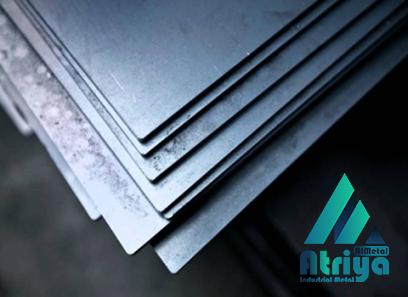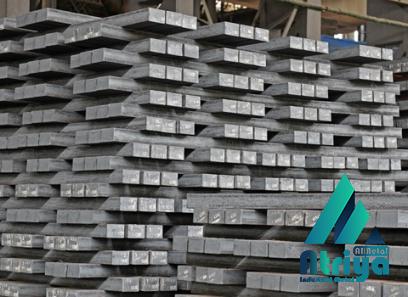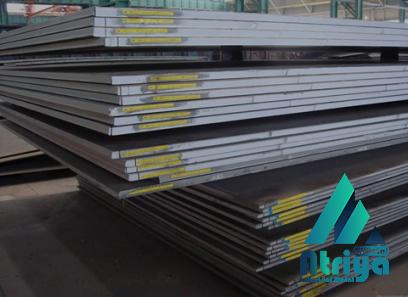An Invaluable Resource for Industries Mill scale, also known as iron oxide, is a byproduct of steel production that forms during the hot-rolling process. It is composed of iron oxides, mainly magnetite and hematite, which occur as a result of the oxidation of iron during the manufacturing process. While it may appear as waste material, mill scale actually contains valuable iron with a high concentration and can be repurposed in various industries. One of the primary uses of mill scale is as a raw material in the manufacturing of iron and steel. The iron content in mill scale makes it a suitable substitute for iron ore in the production of steel. By using mill scale as a raw material, steel producers can reduce costs, as well as the environmental impact of mining iron ore.

.
 In addition, mill scale can help improve the quality of the final product by providing certain desirable properties, such as increased hardness and enhanced surface finish. The construction industry also benefits from the use of iron in mill scale. Due to its high iron content, mill scale can be used as an additive in cement and concrete production. This not only reduces the environmental impact of cement manufacturing but also enhances the strength and durability of the final product. Additionally, the iron oxides in mill scale act as pigments, giving concrete and mortar a darker color, which can be desirable for certain applications. Another industry that can make use of mill scale is the chemical industry. Iron oxide, one of the main constituents of mill scale, is widely used in the production of various chemicals.
In addition, mill scale can help improve the quality of the final product by providing certain desirable properties, such as increased hardness and enhanced surface finish. The construction industry also benefits from the use of iron in mill scale. Due to its high iron content, mill scale can be used as an additive in cement and concrete production. This not only reduces the environmental impact of cement manufacturing but also enhances the strength and durability of the final product. Additionally, the iron oxides in mill scale act as pigments, giving concrete and mortar a darker color, which can be desirable for certain applications. Another industry that can make use of mill scale is the chemical industry. Iron oxide, one of the main constituents of mill scale, is widely used in the production of various chemicals.
..
 It is used as a catalyst in chemical reactions, as a pigment in paints and coatings, and as a magnetic material in magnetic tapes and storage devices. The availability of mill scale as a raw material can contribute to cost savings and a more sustainable production process for these industries. In recent years, there has been growing interest in finding innovative ways to utilize mill scale. Researchers and entrepreneurs have explored its potential applications in areas such as wastewater treatment, soil remediation, and even the production of nanoparticles. These emerging uses not only add value to mill scale but also contribute to a more circular and sustainable economy. Nevertheless, it is important to note that the use of mill scale should be carefully regulated to ensure compliance with environmental and health standards.
It is used as a catalyst in chemical reactions, as a pigment in paints and coatings, and as a magnetic material in magnetic tapes and storage devices. The availability of mill scale as a raw material can contribute to cost savings and a more sustainable production process for these industries. In recent years, there has been growing interest in finding innovative ways to utilize mill scale. Researchers and entrepreneurs have explored its potential applications in areas such as wastewater treatment, soil remediation, and even the production of nanoparticles. These emerging uses not only add value to mill scale but also contribute to a more circular and sustainable economy. Nevertheless, it is important to note that the use of mill scale should be carefully regulated to ensure compliance with environmental and health standards.
…
 Iron oxide, although generally considered safe, may contain trace elements or hazardous substances that need to be properly managed. Government regulations and industry standards play a crucial role in ensuring the safe and responsible use of mill scale across different industries. In conclusion, mill scale, with its high iron content, is a valuable resource that can be repurposed in various industries. By using mill scale as a raw material, steel producers can reduce costs and environmental impact. Additionally, mill scale finds applications in the construction and chemical industries, providing strength, durability, and color to various products. With ongoing research and innovation, mill scale’s potential uses are expanding, promising a brighter, more sustainable future for this once-considered waste material.
Iron oxide, although generally considered safe, may contain trace elements or hazardous substances that need to be properly managed. Government regulations and industry standards play a crucial role in ensuring the safe and responsible use of mill scale across different industries. In conclusion, mill scale, with its high iron content, is a valuable resource that can be repurposed in various industries. By using mill scale as a raw material, steel producers can reduce costs and environmental impact. Additionally, mill scale finds applications in the construction and chemical industries, providing strength, durability, and color to various products. With ongoing research and innovation, mill scale’s potential uses are expanding, promising a brighter, more sustainable future for this once-considered waste material.











Your comment submitted.